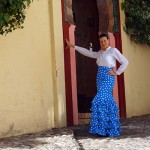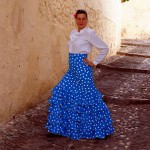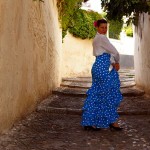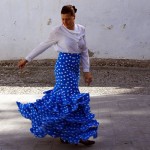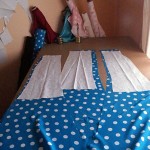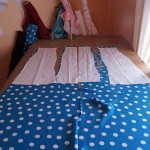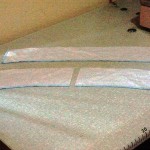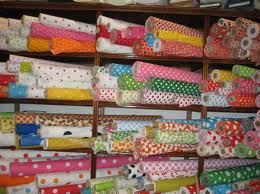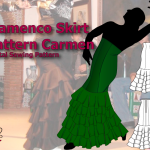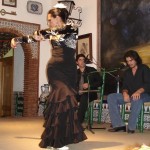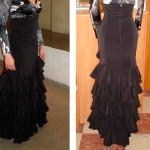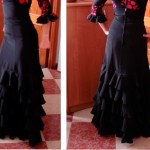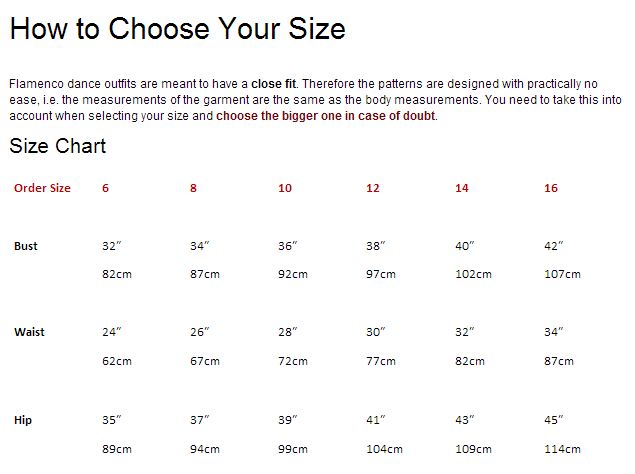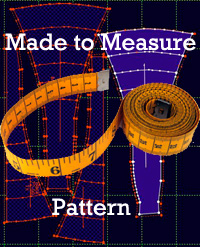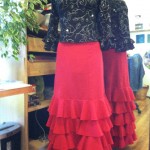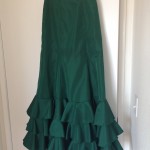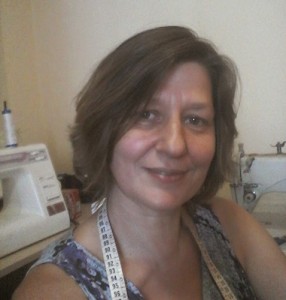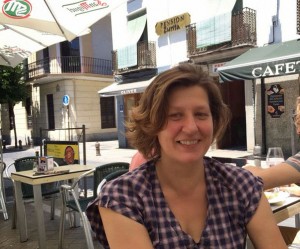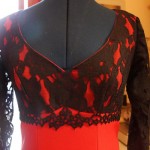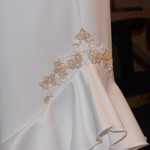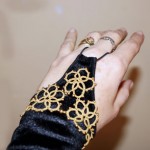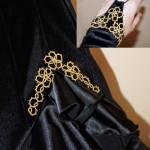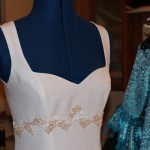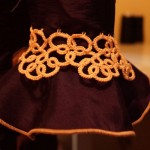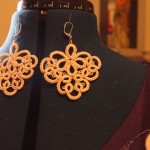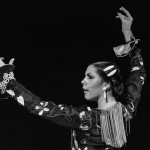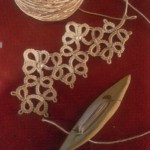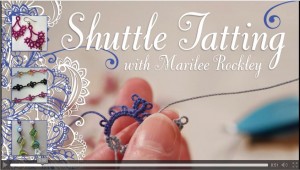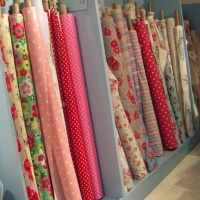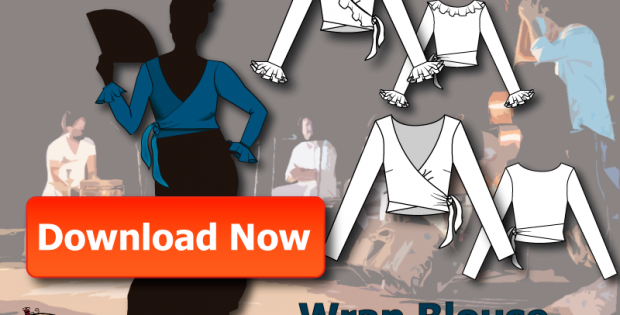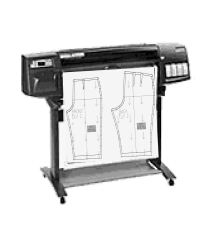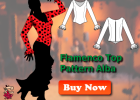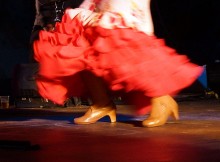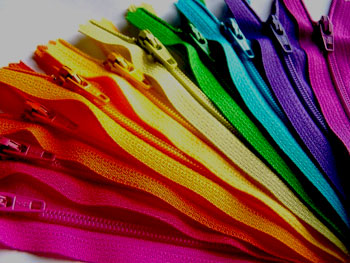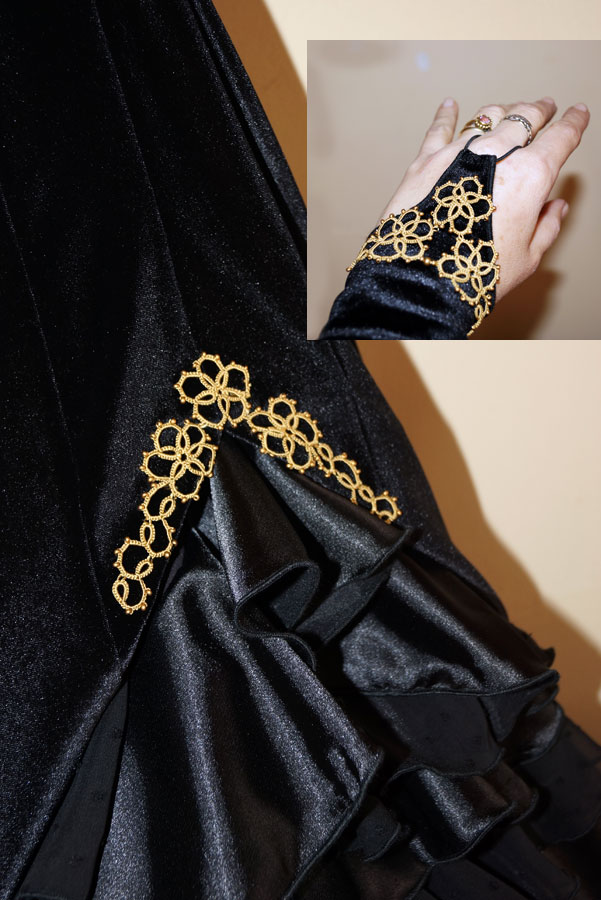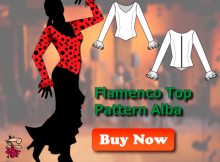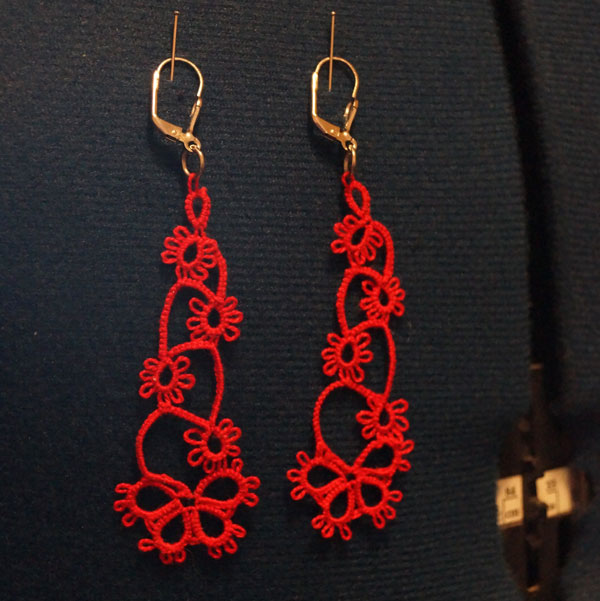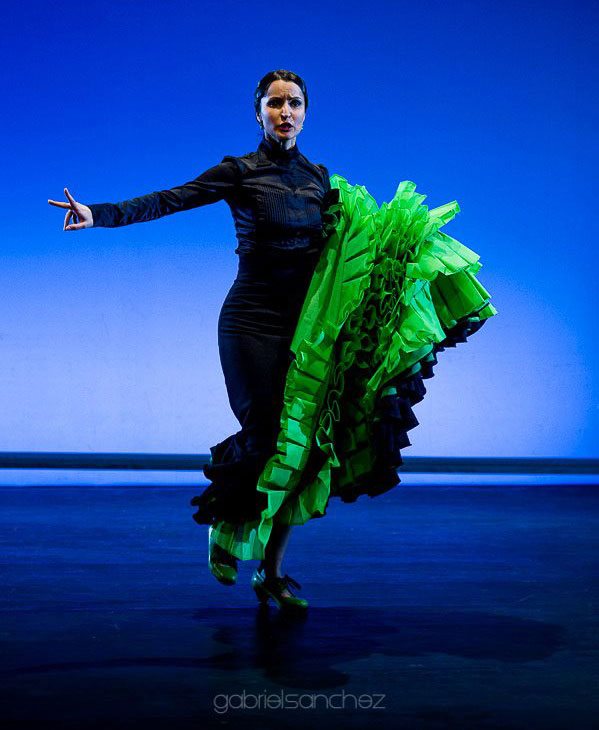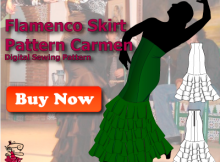How to Sew a Flamenco Skirt – Tutorial Part 1
- Click to enlarge
Love to make a flamenco skirt like the one in the photos above but not sure whether you can pull it off?
It is not as hard as you might think. Let me walk you through from start to finish:Getting Ready
The Pattern
To start get the Flamenco Skirt Pattern Carmen in your size or the one that comes closest. When choosing your size keep in mind that the skirt is designed for a very close fit and has very little ease. In case of doubt go for the larger size. Print the pattern at home and assemble it or have it printed at a print shop.Materials & Equipment
You’ll need- 2,30m of fabric for the skirt and
- an additional 3m of fabric for the ruffles (assuming a fabric width of 1,50m).
- 0,80m of poplin lining (the skirt is lined down to where the ruffles start to allow the lower skirt part to move freely)
- a normal 30cm-35cm long zipper. To make sure you can put the skirt on easily calculate hip depth (vertical measurement from waist to hip, usually 22-25cm) + 8cm for the minimum zipper length.
- sewing machine and usual sewing tools (scissors, measuring tape, pins etc.)
- serger (optional)
Cutting the Skirt Pieces
Cut the 7 skirt pieces- center front (1x)
- side front (2x)
- side back (2x)
- center back (2x)
Also cut the front and back facing pieces from the poplin lining fabric.
- front pieces
- back pieces
- front and back facing
Go on to How to Sew a Flamenco Skirt – Tutorial Part 2
http://www.flamencodressmaking.com/2014/10/how-to-sew-a-flamenco-skirt-tutorial-part-1/
http://www.flamencodressmaking.com/contact/

